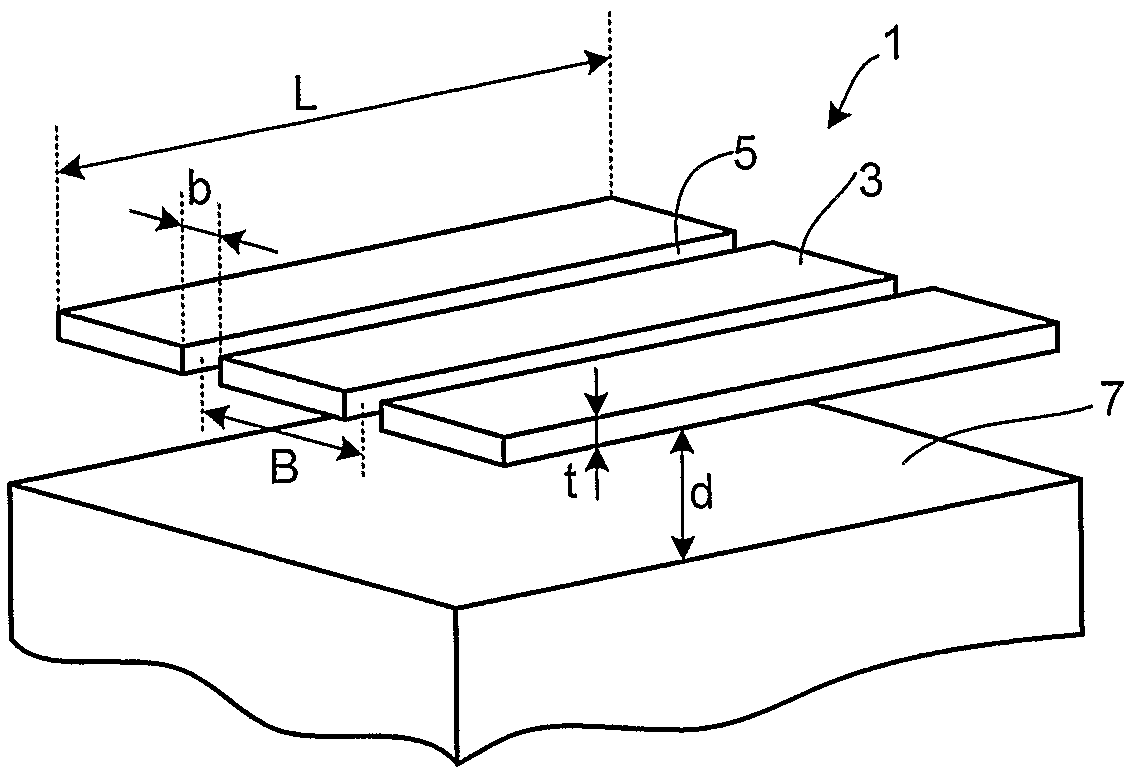Sound absorbent
a technology of absorbent and sound, which is applied in the field of sound absorbent, can solve the problems of irritating the respiratory passages of people, giving the sensation of dry air, and difficult to estimate, and achieves the effect of less cost and better absorption characteristics
- Summary
- Abstract
- Description
- Claims
- Application Information
AI Technical Summary
Benefits of technology
Problems solved by technology
Method used
Image
Examples
Embodiment Construction
[0023]FIG. 1 is a principle drawing of a sound absorbent 1 according to the invention, comprising a panel element 3 with slits 5, arranged at a distance from a rear surface 7. Of the four parameters mentioned above, FIG. 1 indicates the width b of the slit, the distance B between the centre lines of adjacent slits 5, the thickness t of the panel element 3, and the distance d between the panel element 3 and the rear surface 7. The drawing in FIG. 1 only illustrates the principle of the design, and differs from a genuine embodiment of a sound absorbent according to the invention.
[0024]The slit width b is preferably less than 0.4 mm. Larger slit widths than this will yield poor absorption by friction of viscous flow. Advantageously, the slit width b is less than 0.3 mm. The distance between the panel element 3 and the rear surface 7 is preferably between 30 and 500 mm. This distance influences the frequency range for which the sound absorbent absorbs, as larger distances result in lowe...
PUM
 Login to View More
Login to View More Abstract
Description
Claims
Application Information
 Login to View More
Login to View More - R&D
- Intellectual Property
- Life Sciences
- Materials
- Tech Scout
- Unparalleled Data Quality
- Higher Quality Content
- 60% Fewer Hallucinations
Browse by: Latest US Patents, China's latest patents, Technical Efficacy Thesaurus, Application Domain, Technology Topic, Popular Technical Reports.
© 2025 PatSnap. All rights reserved.Legal|Privacy policy|Modern Slavery Act Transparency Statement|Sitemap|About US| Contact US: help@patsnap.com



